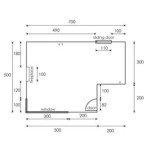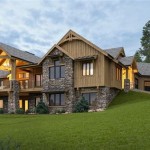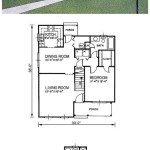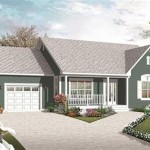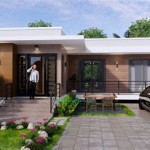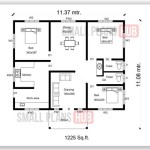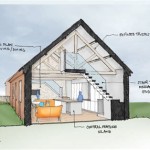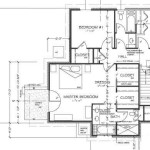English Manor House Plans: A Guide To Traditional Home Designs
English manor house plans represent a timeless architectural style, evoking images of stately homes nestled in the English countryside. These designs are characterized by their grandeur, historical influences, and emphasis on formal living. Understanding the core elements of these plans is crucial for anyone considering building or renovating a home in this style.
The allure of the English manor house lies in its rich history and ability to combine elegance with practicality. These homes were originally designed as centers of agricultural estates, reflecting the social hierarchy and lifestyle of the landed gentry. Today, they continue to inspire homeowners seeking a residence that exudes sophistication and enduring charm.
Key Architectural Characteristics
Several distinct architectural features define English manor house plans. These features contribute to the overall aesthetic and functionality of the home.
Symmetrical Facade: A hallmark of many English manor houses is their symmetrical front elevation. This often involves a central entrance flanked by balanced window arrangements on either side. The symmetry creates a sense of order and formality, reflecting the classical influences on the design.
Stone or Brick Construction: Traditional materials such as stone and brick are commonly used in the construction of English manor houses. Stone, often sourced locally, lends a sense of permanence and connection to the land. Brick, especially red brick, provides a warm and inviting aesthetic. The choice of material often depends on the region and the historical era of the design influence.
Gable Roofs: Steeply pitched gable roofs are another defining characteristic. These roofs provide ample attic space and contribute to the overall verticality of the house. Dormer windows are frequently incorporated into the roofline to allow natural light into the upper floors.
Multi-Paned Windows: Large, multi-paned windows are essential for bringing natural light into the interior spaces. These windows often feature decorative mullions, adding to the visual interest of the facade. Casement or double-hung windows are common choices, reflecting the historical styles of the era.
Formal Entrance: The entrance to an English manor house is typically grand and imposing. This often includes a prominent front door, flanked by columns or pilasters, and a covered porch or portico. The entrance serves as a focal point and creates a welcoming atmosphere.
Beyond these core features, other details such as quoins (decorative corner stones), window boxes, and intricate brickwork can further enhance the authentic look of an English manor house.
Interior Design Considerations
The interior layout of an English manor house plan is as important as its external appearance. The interior spaces are typically designed for formal living and entertaining, while also providing comfortable areas for family life.
Formal Living Spaces: A formal living room, dining room, and library are essential components of an English manor house interior. These spaces are typically located on the main floor and designed for entertaining guests. High ceilings, fireplaces, and elaborate moldings are common features.
Grand Staircase: A prominent staircase is often a focal point of the interior, connecting the main floor to the upper levels. The staircase may feature intricate woodwork, wrought iron railings, and a spacious landing. The design of the staircase often reflects the overall architectural style of the house.
Spacious Kitchen: The kitchen is typically designed as a large and functional space, capable of accommodating both meal preparation and casual dining. A large island, ample counter space, and high-end appliances are common features. The kitchen may also include a breakfast nook or informal dining area for everyday use.
Multiple Bedrooms and Bathrooms: English manor houses typically include multiple bedrooms and bathrooms, providing ample space for family members and guests. Master suites often include a private bathroom, dressing room, and sitting area. Guest bedrooms may also have en-suite bathrooms.
Service Areas: Historically, manor houses included specific areas for servants and household staff. While these spaces may not be necessary in modern homes, similar areas can be adapted for other purposes, such as home offices, laundry rooms, or mudrooms. These areas are typically located discreetly away from the main living spaces.
Interior design elements such as wood paneling, wainscoting, and antique furniture can further enhance the traditional aesthetic of an English manor house. Color palettes often consist of rich, warm tones, complemented by natural materials such as wood, stone, and leather.
Adapting the Design for Modern Living
While the traditional English manor house plan offers a timeless aesthetic, it is important to consider how the design can be adapted for modern living. This involves incorporating contemporary features and technologies while preserving the historical character of the home.
Open Floor Plans: Many modern homeowners prefer open floor plans that allow for greater flexibility and interaction between living spaces. While traditional manor houses typically feature more compartmentalized layouts, it is possible to incorporate elements of open floor plans while still maintaining the overall character of the design. For example, the kitchen and dining area can be combined into a single, open space, while the living room remains a separate, more formal area.
Energy Efficiency: Modern building codes require homes to be energy efficient, and English manor houses are no exception. Energy-efficient windows, insulation, and HVAC systems can significantly reduce energy consumption and improve the comfort of the home. Solar panels and other renewable energy sources can also be incorporated into the design.
Smart Home Technology: Smart home technology can be seamlessly integrated into an English manor house plan, providing convenience and control over various aspects of the home, such as lighting, heating, and security. These technologies can be concealed or integrated into the design in a way that does not detract from the overall aesthetic.
Outdoor Living Spaces: Outdoor living spaces, such as patios, porches, and gardens, are increasingly popular among homeowners. These spaces can be incorporated into an English manor house plan, providing opportunities for outdoor entertaining and relaxation. Formal gardens, terraces, and outdoor fireplaces can complement the traditional style of the home.
Accessibility: Consideration should be given to accessibility for all residents and visitors. Features such as ramps, wider doorways, and accessible bathrooms can be incorporated into the design without compromising the overall aesthetic.
Adapting a traditional English manor house plan for modern living requires careful planning and attention to detail. The goal is to create a home that is both beautiful and functional, providing a comfortable and stylish living environment for years to come.
Ultimately, the appeal of English manor house plans lies in their timeless elegance and enduring charm. By understanding the core architectural characteristics, interior design considerations, and adaptation strategies, homeowners can create a residence that embodies the spirit of the English countryside while meeting the demands of modern living.

English Manor Houses To Inspire Your Design Jewkes

English Manor Houses To Inspire Your Design Jewkes

English Manor Houses To Inspire Your Design Jewkes

Striking Traditional Brick Manor House Plans Build It

English Manor Houses To Inspire Your Design Jewkes

English Manor House Design Luxe Homes Build Birmingham Michigan

On English Country Houses

English Mansion House Plans From The 1800s

English Manor House Design Luxe Homes Build Birmingham Michigan

English Country Manor 15878ge Architectural Designs House Plans
Related Posts

